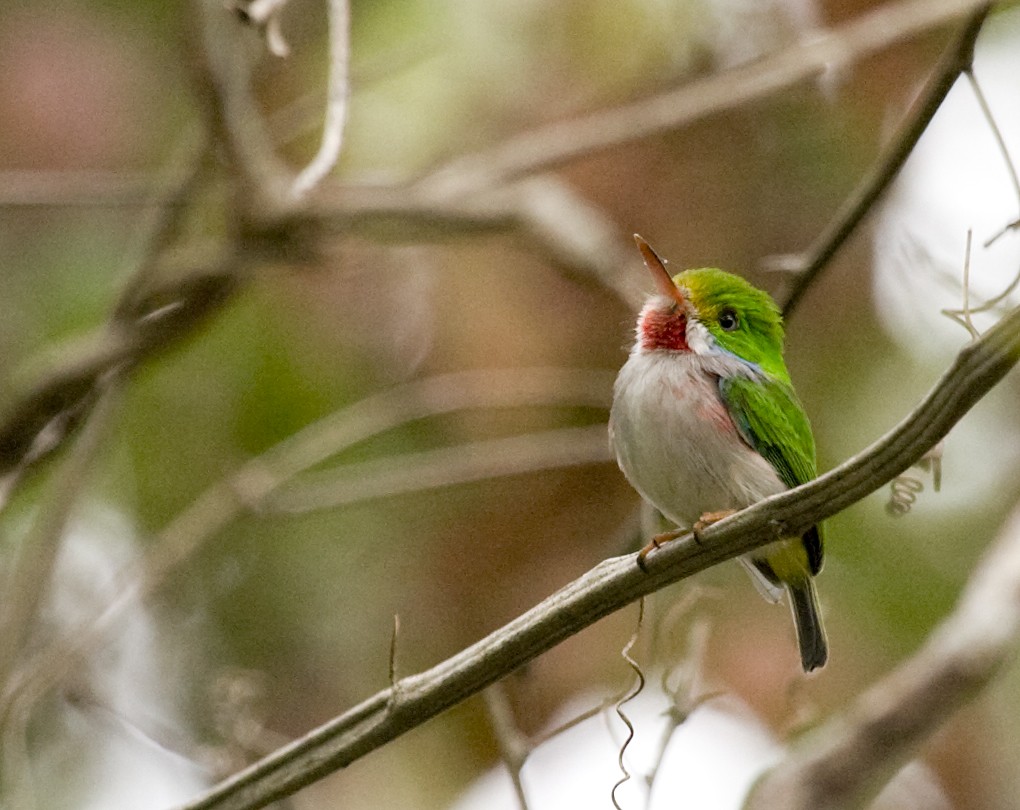Cuban Tody
A species of Todies Scientific name : Todus multicolor Genus : Todies
Cuban Tody, A species of Todies
Botanical name: Todus multicolor
Genus: Todies
Content
Description General Info
 Photo By Laura Gooch , used under CC-BY-SA-2.0 /Cropped and compressed from original
Photo By Laura Gooch , used under CC-BY-SA-2.0 /Cropped and compressed from original Description
The species is characterized by small size (11 cm (4.3 in), 59 g (2.1 oz)), large head relative to body size, and a thin, flat bill. Similar to other todies, the coloration of the Cuban tody includes iridescent green dorsum, pale whitish-grey underparts, and red highlights. This species is distinguished by its pink flanks, red throat, yellow lores, and blue ear patch. The bill is bicolored: black on top and red on the bottom. 
Size
11 cm
Nest Placement
Cavity
Feeding Habits
Cuban Tody consumes a variety of foods, including insects, spiders, small lizards, and fruits. Its foraging behavior involves active hunting, using quick flights from perches to snag prey. This bird exhibits a preference for hunting during daylight and possesses a diet uniquely adapted to a wide range of small prey.
Habitat
Cuban Tody can be found across a diverse range of habitats including dry lowlands, evergreen forests, coastal areas, and in proximity to water bodies like streams and rivers. These birds are particularly flexible, inhabiting areas with wooded and semi-wooded landscapes, thickets, both xeric and riparian zones, as well as wet and dry forests. Cuban Tody is also found in gallery forests, pine plantations, secondary growth areas, and locations with clay embankments, with a preference for places that provide shoreline vegetation.
Dite type
Insectivorous
General Info
Feeding Habits
Bird food type
Behavior
They are often seen in pairs. When perched, they sometimes repeat a peculiar short "tot-tot-tot-tot", but the most characteristic call is a soft "pprreeee-pprreeee" (which is the origin of its Cuban common name, 'Pedorrera'). Its wings also produce a whirring sound that is used during display flights. 
Distribution Area
The Cuban tody is a year-round resident of portions of Cuba and islands just off the Cuban coast. Analysis of song variation suggests that the Cuban tody is structured into two populations, corresponding to eastern and western Cuba. The tody, like many resident Cuban bird species, is a habitat generalist. It is known to live in dry lowlands, evergreen forests, coastal vegetation, and near streams and rivers. Cuban todies may be difficult to see; Vaurie reported, "Only one seen at the Cape, in dense underbrush, but several heard." 
Species Status
Not globally threatened.